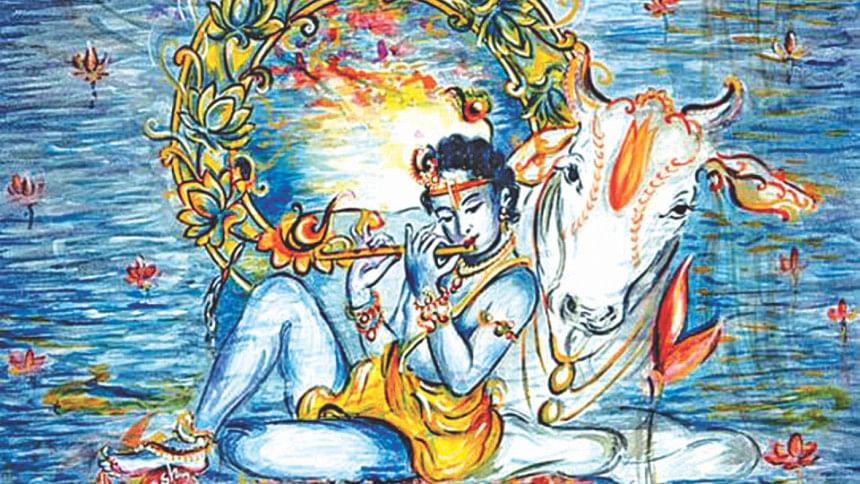“Padmar Dheu Re . . .’’

Translator's Note:
Kazi Nazrul Islam was enticed by the challenge of writing a (Song of Separation) in a Bhatiyali tune. River Padma is, of course, the mighty river inextricably associated with East Bengal through which it flows. Nazrul, a native of West Bengal, was visiting East Bengal and Bhatiyali is the genre of traditional songs of boatmen plying the waterways of eastern Bengal. The Bhatiyali mode must have seemed the most appropriate one for any song Nazrul composed as a paean to the mighty River Padma. Themes of Bhatiyali songs usually deal with nostalgia and homesickness of a young married woman sitting by the riverside, beckoning the passing boatman to go and tell her brother to come and escort her for a visit to her parental home. But Nazrul broke this convention in his Bhatiyali by adapting a bicched theme, which is that of Radha's lament for separation from Krishna. He did this because, in my opinion, he could not resist the punning of Padma (cÙv), the river, and padmo (cÙ), the lotus blossom!
The punning, however, gives rise to a problem. The two words may be similar sounding, but in nature they do not cohabit the same world. Lotus is a still water plant, quietly growing in a pond or by a lakeshore, not to be swept up by the swift moving waves of a noisy river by any chance. Nazrul tackles the problem by coining a metaphor, his favorite image of 'hridoy-podmo' the heart-lotus, the pedestal upon which the flute-playing, cross-ankled Krishna stands in popular iconography. The absent Krishna has left the pedestal vacant, and adrift in the waves of the River Padma. The song's text negotiates between the image of a lotus blossom, a desirous heart, and a barren heart-lotus on the look-out for God Krishna wondering alongside the river of Love.
Nazrul is almost playful in the way he throws himself such artistic challenges. How brilliantly he has met all of those challenges in creating one of the most beloved songs in the bangla language! The text of the bangla song is deceptively simple. Yet, when I made an informal survey, I discovered that most people do not fully grasp the meaning of the song. Despite Nazrul's mastery in reconciling 'Padma,' the river, and 'padmo,' the lotus blossom, people are puzzled by the different elements of the text, and the kind of sense they make as a whole. And yet they've heard, or even sung the beautiful song, all their lives! I hope my English translation will deepen their appreciation and love of the song.

 For all latest news, follow The Daily Star's Google News channel.
For all latest news, follow The Daily Star's Google News channel. 



Comments